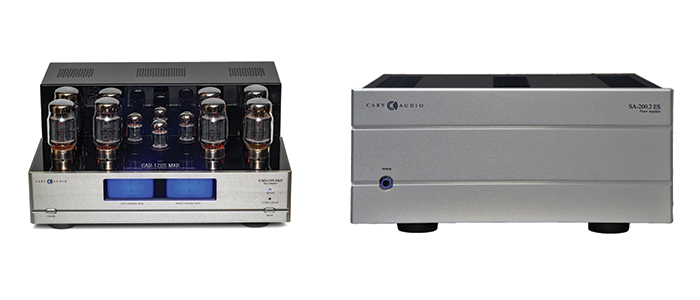The whole tube or solid-state dilemma is somewhat of a misnomer. Once you accept the reality that a tube amp and a solid-state amp are very different in how they operate, you’ll perhaps better understand that each have their own traits.
The biggest difference between them is that a solid-state amp is driven by current throughout the output devices and a tube is driven by voltage. Voltage alone can’t drive a speaker, hence the reason for needing output transformers. You’ll notice most stereo tube amps have 3 large, heavy objects, typically at the rear. They are a power transformer and two output transformers (one for each channel) that convert the voltage from the output tubes to current at the speaker posts. A solid-state amp typically has a single power transformer and no output transformers. However, a solid-state output transistor and a tube basically do the same thing. One doing it in silicone with current and the other doing it in a glass vacuum with voltage. Do they sound different? Yes, we believe so. However, some tube companies make their tube amps sound more solid-state like (for power) and some solid-state products can sound very tube-like. A key difference is that a tube product will require a small amount of upkeep and maintenance. For most who desire the benefit of tubes, it’s a small price to pay. Others just don’t want to maintain an amp once installed. Back to the sound. First, let’s squelch the myth that tube amps don’t have strong or controlled bass. Today, that couldn’t be further from the truth. Let’s also put to bed that solid-state amps aren’t smooth. Like any product from any manufacturer, all products have a voicing and color which is why you buy any given product. There are benefits and drawbacks to each, but one must weigh each depending on what you are looking to achieve in your audio system both in terms of sonics and upkeep as well as taking the rest of the system into consideration. So, in doing so, what are the benefits of each? Generally speaking, tubes offer a greater sense of bloom, more texture and realism to vocals and instruments, a richer midrange. Solid-state usually offers more watts per dollar, faster sound, greater detail. Once again these are generalizations. If you have a system that overall is a bit harsh or fatiguing, chances are you could greatly benefit from a tube amp. On the other hand, if your system is flat, sluggish, or too soft sounding, perhaps a quality solid-state amp is the way to go. Other factors of particular importance are speaker load. Some speakers (although few today) require lots of power and very low impedance driving capabilities. In that scenario, a solid-state amp may do better. But, if your speakers have a moderate impedance curve and are of average efficiency, a tube amp can redefine your definition of what a great audio system can sound like.
If you are located within the United States and Canada, you can purchase directly from our factory.
If you are located outside the United States and Canada, you can find your local dealer/distributor here.
�





